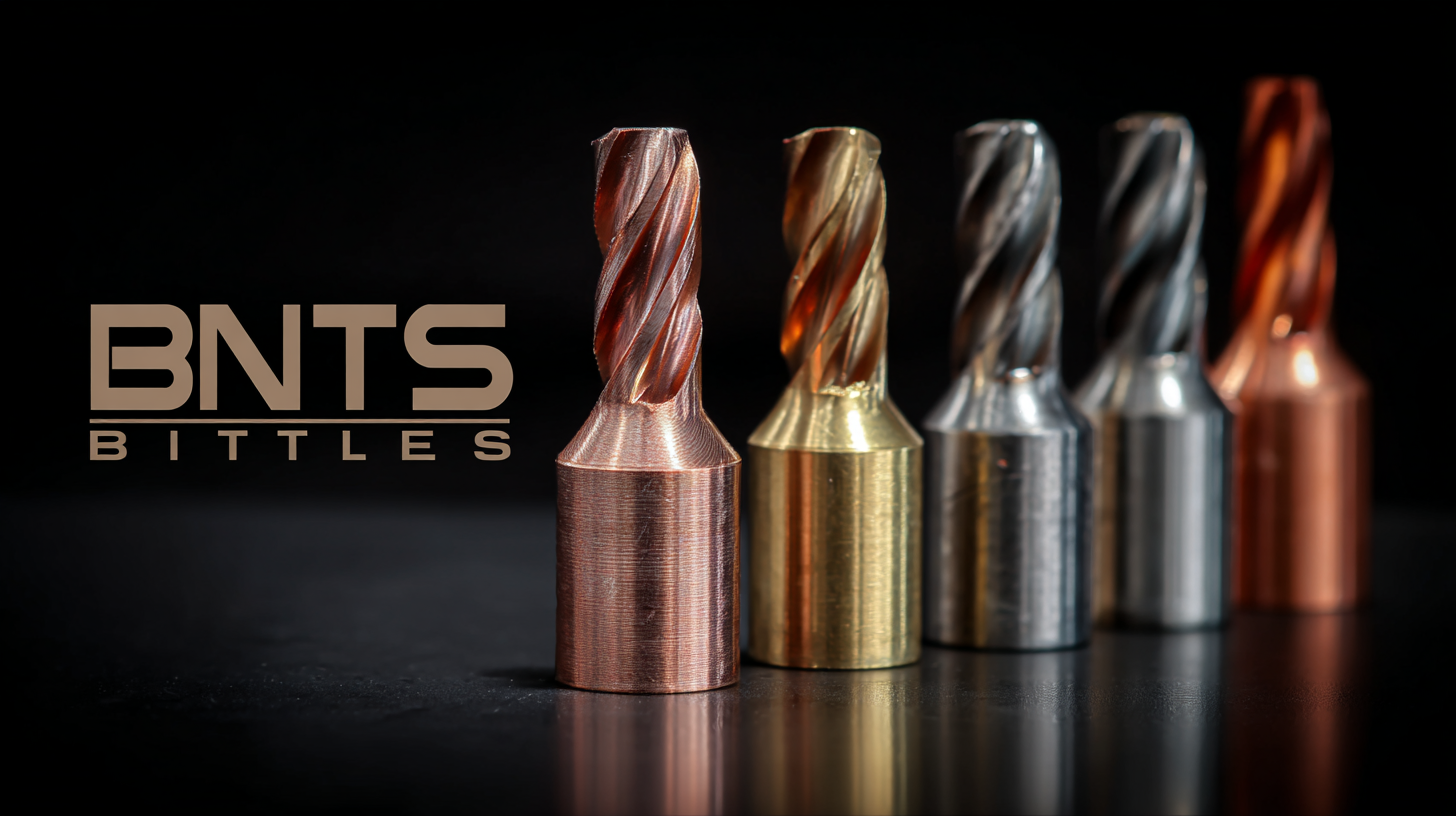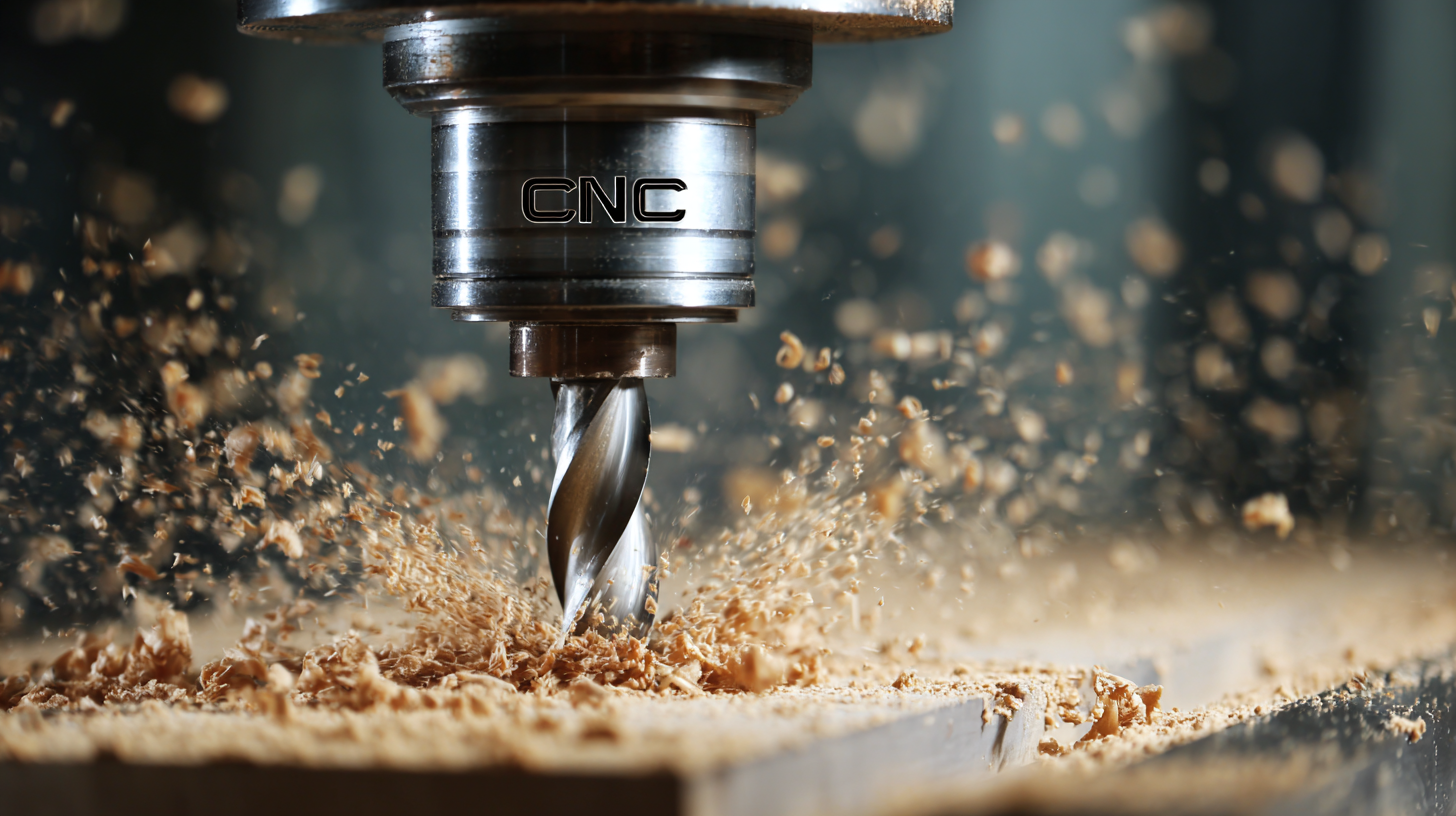As we look ahead to 2025, the landscape of CNC router bits is poised for significant transformation, driven by emerging trends and innovative solutions that prioritize both service and cost-efficiency.
According to a recent industry report by MarketsandMarkets, the global CNC router market is expected to reach $5.68 billion by 2025, underscoring the growing demand for high-quality CNC router bits in diverse applications, from woodworking to metal fabrication.
Companies are increasingly recognizing the competitive advantage of superior after-sales service and reduced maintenance costs, which not only enhance customer satisfaction but also improve the operational efficiency of CNC routers.
As manufacturers innovate, the focus on durable, precision-engineered CNC router bits is more critical than ever, aiming to minimize downtime and elevate production standards across sectors.
Understanding these trends will be vital for industry stakeholders looking to thrive in a rapidly evolving market.

As we look ahead to 2025, the landscape of CNC router bits is set to undergo transformative changes driven by technological advancements and evolving industry demands. A recent report from MarketsandMarkets projects that the CNC machining market will reach $100 billion by 2025, with an emphasis on high-performance tools that improve efficiency and precision. This surge is expected to propel innovations in CNC router bits, including the development of specialized coatings that enhance durability and reduce wear, enabling longer tool life and consistent quality in complex applications.
One notable trend is the growing adoption of smart tooling solutions. According to an analysis by ResearchAndMarkets, smart CNC router bits equipped with IoT sensors can provide real-time analytics, allowing for predictive maintenance and reducing downtime. This not only optimizes operational efficiency but also caters to the increasing demand for customization in industries such as woodworking and aerospace. As manufacturers strive to meet these demands, the integration of advanced materials such as carbide and titanium-coated bits will become paramount, ensuring that CNC router bits can withstand high-speed operations while maintaining exceptional cutting quality.

The CNC router technology landscape is rapidly evolving, with forecasts indicating significant growth in the global woodworking machinery market. Anticipated to expand from $5.23 billion in 2025 to $7.88 billion by 2032, this surge, driven by a compound annual growth rate (CAGR) of 6.0%, highlights the increasing demand for precision and efficiency in woodworking processes. As manufacturers strive to meet the rising market needs, advancements in CNC router bits play a crucial role in enhancing cutting performance and versatility.
Innovative solutions are also emerging in related industries, exemplified by the global food extrusion market, which is projected to grow from USD 76.74 billion in 2023 to USD 113.94 billion by 2032, at a CAGR of 4.49%. This growth reflects not only a diversification in applications but also escalating demands for customization in food processing. As machinery technologies become more integrated and sophisticated, the convergence between woodworking and food production opens avenues for new applications and efficiencies, marking a transformative moment in these sectors.
| Trend | Description | Projected Market Growth (%) | Innovative Technologies |
|---|---|---|---|
| Increased Automation | Automation in CNC machining to enhance productivity and precision. | 15% | Robotic Integration |
| Sustainability Focus | Growing demand for eco-friendly materials and processes. | 12% | Biodegradable Cutting Tools |
| Smart Manufacturing | Integration of IoT for real-time monitoring and data analytics. | 20% | IoT-Enabled CNC Systems |
| Advanced Materials | Use of composite materials for enhanced performance. | 10% | Nanomaterials in Tool Design |
| Customization Trends | Increase in demand for customized CNC router solutions. | 18% | 3D Printing Integration |
The demand for CNC router bits is evolving rapidly, driven by advancements in materials and the industry’s shift towards sustainability. Reports indicate that the global market for sustainable manufacturing materials is projected to reach $650 billion by 2025, underscoring a significant pivot towards eco-friendly options in various industries, including woodworking and metal fabrication. As companies strive to reduce their carbon footprints, manufacturers of router bits are now investing in sustainable materials such as bio-based composites and recycled metals, which not only minimize environmental impact but also enhance performance.
Recent studies reveal that the performance of router bits made from high-performance materials, like titanium nitride coating and carbide enhanced composites, can improve productivity by up to 25%. This performance boost is essential for professionals seeking greater efficiency and durability in their tools. Furthermore, as the woodworking and metalworking industries increasingly adopt automation and smart manufacturing technologies, there is an increasing need for router bits that can withstand higher speeds, temperatures, and loads without compromising their integrity. The convergence of these material advancements and innovative solutions showcases a future where sustainability and high performance go hand in hand.
As we look toward 2025, the landscape of CNC routing is set to transform dramatically with the integration of the Internet of Things (IoT). This technology opens up new avenues for smart manufacturing, allowing CNC routers to communicate seamlessly with other devices and systems. By incorporating IoT capabilities, manufacturers can monitor their equipment in real time, optimize performance, and predict maintenance needs before they become critical. This proactive approach not only minimizes downtime but also boosts overall productivity, making it a game-changer for the industry.
Moreover, IoT integration brings data analytics to the forefront of CNC routing solutions. With the ability to gather and analyze vast amounts of data from CNC routers, manufacturers can gain insights into operational efficiency and process optimization. For example, understanding how different router bits perform under various conditions can lead to better material selection and design choices, ultimately enhancing product quality. As we progress through 2025, the successful implementation of smart manufacturing features will be essential for businesses aiming to remain competitive and innovative in an ever-evolving market.
In 2025, the landscape of CNC router bits is increasingly shaped by user-centric design principles. As consumers become more sophisticated, their demands are pushing manufacturers to innovate. This shift is evident in the development of CNC router bits that focus on precision, durability, and ease of use. The incorporation of smart technologies, such as IoT connectivity, allows users to monitor performance and optimize their workflows in real-time, making CNC routing more accessible to hobbyists and professionals alike.
Tip: When selecting CNC router bits, consider the specific materials you frequently work with. Different materials require specialized bits for optimal performance, ensuring cleaner cuts and longer tool life.
Furthermore, sustainability is emerging as a key consumer demand. Many companies are now focusing on eco-friendly materials and production processes to meet the expectations of environmentally conscious users. This trend not only benefits the planet but also appeals to a growing market segment that prioritizes sustainability in their purchasing decisions.
Tip: Always check for certifications or eco-labels on CNC router products to ensure they align with your sustainability goals. This can also enhance your brand's reputation as a responsible entity in the industry.
